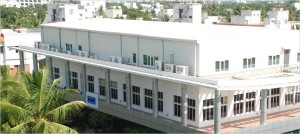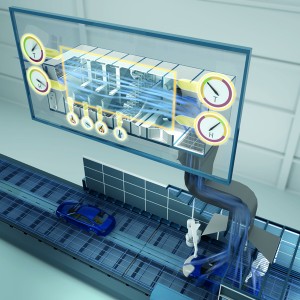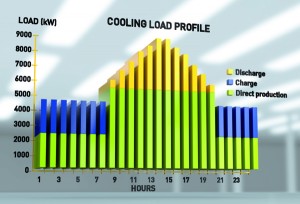
Dürr’s experience in air-conditioning and cooling innovation can deliver a competitive edge for Indian companies, discovers automotive writer Dermot Healy.
 Dürr is a major global mechanical- and plant-engineering group and generates around 65% of its sales within the automotive industry. It also supplies the machinery, chemical, pharmaceutical and wood-processing industries with innovative production and environmental technology.
Dürr is a major global mechanical- and plant-engineering group and generates around 65% of its sales within the automotive industry. It also supplies the machinery, chemical, pharmaceutical and wood-processing industries with innovative production and environmental technology.
Dürr’s Indian operations began when the company built a galvanising line for Tata at Jamshedpur. Today – almost fifty years later – all of its Indian business units are actively offering support to OEMs and Tier 1 and Tier 2 suppliers. The Group is distinguished by its strong commitment to research and development and has more than doubled its R&D expenditure since 2007. A total of 250 highly qualified people are now working in this area.
As a leading supplier of sophisticated robotic paint lines, Dürr has examined paint-shop processes in extensive detail as part of its search for greater efficiency. The energy-intensive nature of vehicle painting makes this an especially important area for investigation. And it is here that Dürr has discovered ways to use its global experience to develop products that can contribute toward sustainable and resource-conserving production.
With energy and resource utilisation now a key issue in the Indian automotive sector, Dürr is keen to help companies in the region to benefit from its technologies. Two of its most recent innovations have the potential to help Indian companies improve operating efficiency and make impressive cost savings. These two products are the EcoSmart AC system and Latent Cooling Storage (LCS) technology. They form part of Dürr’s portfolio of innovation that addresses sustainability and energy cost saving in vehicle paintshops.

EcoSmart AC allows carmakers to control the air supply and recirculation systems during the painting process. During paint application, it is especially important to maintain very specific temperature and humidity levels in order to ensure the appropriate levels of quality that are now demanded by Indian OEMs.
The EcoSmart AC system automatically evaluates the temperature and humidity setpoints and ensures that they are adjusted to external conditions. This evaluation takes place ten times per second along with the optimal coordination of all of the different variables in accordance with defined parameters. This delivers more effective control of the air conditioning and can lead to a considerable reduction in energy consumption and stable spray-booth operation.
Retrofitting as standard
The systems can be easily retrofitted to existing plant. In one recent installation in India, Dürr was required to complete an installation of EcoSmart AC technology within a one-week window during a scheduled shutdown. Dürr completed the work with minimal disruption and successfully met the customer’s expectations.
The EcoSmart AC system is equipped with technology that will both ensure a stable and efficient control of spray-booth temperatures and humidity and deliver optimum energy usage and ideal operating conditions.
The intelligent process-management system at the core of the EcoSmart AC system is easy to configure and allows the flexible adaptation of plant behaviour to meet customer needs. Not only are the set points for temperature and humidity constantly adjusted to reflect external conditions and all other control variables, but conflicts can be detected and resolved automatically.
 Latent cooling storage load profile
Latent cooling storage load profileA second innovation from Dürr is LCS, which offers a solution to reduce peak-demand charges. Again, this is another technology where a major Indian manufacturer has recently called upon Dürr’s expertise. This manufacturer discovered that Dürr’s LCS system is an effective solution where a manufacturer wants to update a legacy manual paint line. The manufacturer’s plans to upgrade its existing 25-year-old line with a new robotic top-coat paint line faced real difficulties when initial assessments suggested that it would require an electrical power capacity in excess of 200kVA.
The manufacturer’s plans included 650kW chillers to meet the cooling requirements of the paint line during peak operation. The capital costs to acquire such a level of supply, as well as the requirement to secure government authority approval for the capacity increase, posed a major barrier to the project.
To overcome these difficulties, the customer responded positively to Dürr’s suggestions to use the LCS system to dramatically reduce peak electrical power requirements. By operating smaller chillers on a continuous basis, and by storing the energy in the form of ice crystals in an LCS tank when plant demand was low, the customer could benefit from the cooling capacity they needed at peak times yet still have a much more stable pattern of energy consumption.
With the LCS system acting as buffer between the plant’s fluctuating cooling requirement and its stable energy consumption, it no-longer required the high levels of peak energy demand that had been projected. With high-tension customers in India frequently having to pay large maximum-demand charges, in addition to the usual charges for current consumption, the ability to have a stable energy demand profile adds up to real savings in operating costs.
Simple concept with many benefits
Experience with this customer project has shown that utilising stored cooling capacity during peak usage times allows the line to operate with 210kW Chillers, rather than the 650kW units originally envisaged. This, in turn, permits a reduction in auxiliary and back-up equipment, which brings further savings to the customer.
Like all the best technologies, LCS is a simple concept with far-reaching benefits. It utilises air- or water-cooled chillers and an LCS tank. Once the plant is fully operational, the chiller units and the storage will work in tandem to meet the plant’s energy requirements during periods of high demand. When cooling requirements are less – when the plant is out of operation or is operating at less than full capacity – the chillers work to ‘charge’ the storage tank.
The tank itself contains spherical shaped balls made of Polyolefins that contain Phase Change Materials (PCMs). These sphere-encapsulated PCMs include eutectic salts and nucleating agents, as well as a working fluid that is comprised of water with methylene glycol. The PCMs are able to absorb heat, store it, and release it at a later date. This allows a greater cooling capacity and enables a supply of cooling energy at a constant temperature.
The system’s low maintenance costs, and the fact that it can be readily installed in both brown- and green-field sites, means that LCS equipment allows manufacturers to stabilise and phase energy consumption to suit a cost-effective and environmentally beneficial pattern. Dürr claims that, based on its experience, reductions in chiller sizes of up to 50% to 65% are possible, depending on the plant configuration.
Rewarding energy management
Return on investment calculations also suggest very attractive pay-back times for a typical installation. In addition, the benefits of enhanced quality and stability of production can all help tip the balance in favour of an LCS system. Estimates show that active management of air cooling in an LCS installation has the potential to deliver impressive savings with maximum electricity demand costs being cut, in some cases, to well below half. Significant reductions in total operation and maintenance costs are also possible on a typical installation.


































